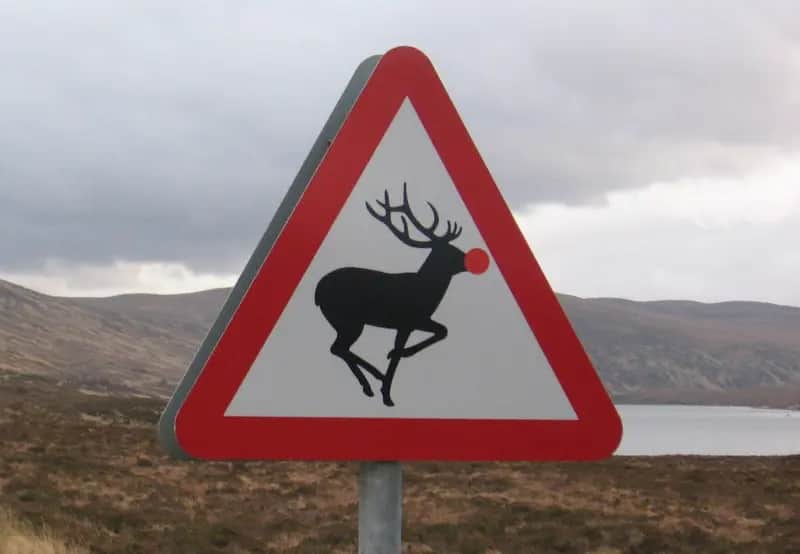WHY SCOTLAND'S NATIONAL PARKS DREAM HAS SOURED

BEAUTY SPOT: Loooking down on the calm waters of Loch Lomond from Beinn Bhreac - but the park is at the centre of a growing storm

SIGN LANGUAGE: Trossachs
IT seemed like the start of something big in Scotland, something of which we could all be proud.
After years and years of heel-dragging, in 2002 we finally caught up with the rest of the world and our first national park, Loch Lomond and the Trossachs, was up and running.
A year later, and we, as proud parents, were celebrating the birth of No.2, the Cairngorms National Park. Our tails were up. There was an appetite for more, a golden opportunity to cherish, to protect and to showcase even more of our beautiful and iconic landscapes.
Surely the area covering Ben Nevis and Glen Coe should be afforded the same treatment? The long glens of Glen Affric; Wester Ross with the magnificent mountains of Torridon and An Teallach; Harris with its seemingly endless stretches of white sands.
And what about promoting the south of the country – Galloway, Scotland's first designated Dark Sky park, taking in all the beauty and history around Glen Trool? There was even an ambitious and innovative move for a marine and coastal park, based around the islands of Mull, Coll and Tiree.
But despite the cross-party pledges during these heady early days to expand the project, and a further commitment to the cause in the SNP's manifesto as recently as 2011, it's all gone quiet. Perhaps that's just as well seeing the current state of affairs.
The stated purpose of the parks was 'to conserve and enhance the cultural and natural heritage' but these noble ideals seem to have fallen down the to-do list. And if you aren't going to adhere to the ethos, then it all becomes pointless.
Bureaucracy, as always, has got in the way. Decisions are being taken behind closed doors with little, if any, accountability to the public. A siege mentality is in place, and there's a constant stream of misinformation and obfuscation.
Park visitors now seem to be regarded as a little more than a nuisance at LLTNPA, to be corralled into allocated spaces and not allowed to stray, arbitrary rules being put in place contrary to the spirit of our much-admired outdoor access legislation.
Camping is only being allowed in designated spots with a cumbersome permit system in operation. There were already adequate powers in place to combat anti-social behaviour but the board decided nothing less than a total ban would suffice despite the fact it ran the risk of criminalising responsible campers. Talk about using a sledgehammer to crack a nut.
The same goes with parking. Most people are happy to pay something towards good facilities, but the introduction of number recognition technology and more gates and barriers suggests this is more about maximising profits than encouraging visitors. It's also obvious that overnight stays are to be discouraged and access could be limited during the winter months.
Worryingly, rather than see the error of their ways, some board members have advocated that these draconian methods should be adopted all over the country. It's more likely however, that much of their bluster will prove unenforceable and costly when legally challenged. There could be interesting times ahead.
The Loch Lomond position was succinctly summed up during BBC Scotland's Out of Doors radio broadcast a couple of weeks ago where the presenters compared the situation here to how national parks are run in the USA.
They highlighted the ludicrous number of signs which have sprung up through the park, all starting with the word 'No'. It's like the anti-Del Monte man has moved in.
Never mind putting your time and money to good use by sorting out the widespread litter problems or addressing the chronic lack of toilet facilities, let's just harass anyone daring to want to camp or park their car. At least the makers of the Bond films will be able to stick to Scottish locations for their remake of Dr No.
So I had to check that it wasn't April 1st when it was announced that LLTNP was in the running for a national park of the year UK award.
The park board would regard this as a huge marketing coup, and normally we Scots would rally to the national cause and pile in the votes for our entry. But it was telling by the reaction on social media that the outdoors community have largely refused to lend support. Many have even used their vote for another candidate to try to make sure there is no reward for the board's incompetence and abuse of power.
There's no doubt the current economic climate is playing a part in the Scottish Government's cooling off on the commitment to create more parks. But more parks would also further restrict land use, and that doesn't fit with the current thinking on wider development and the chaotic spread of wind farms.
Not that the land inside our parks is completely safe anyway. For instance, Glen Falloch has seen devastation on a huge scale with hydro roads forming permanent scars after the decision was taken to scrap any requirements for the ground to be repaired.
In the Cairngorms, the Sheiling area of Coire Cas on Cairn Gorm, has been left in a sorry state with the contractors for a new track going outside their remit and causing huge damage to the surrounding area. This is now being addressed, but only after a huge outcry. It should never have been allowed to happen in the first place.
There's no point creating more national parks until it can be shown we can run the ones we have properly.
*For regular updates on the state of our national parks check out parkswatchscotland.co.uk<!--EndFragment-->

